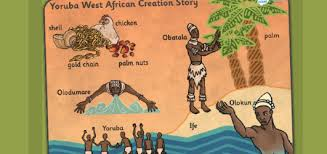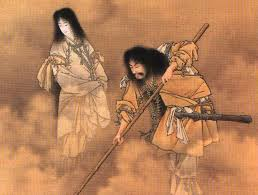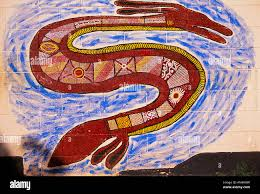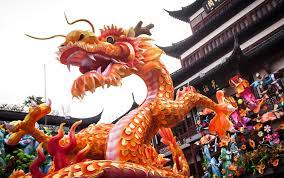Top Myths of the World
Myths have been passed down through generations, shaping cultures, beliefs, and stories throughout the ages. These myths often offer explanations for natural phenomena, the creation of the world, or teach lessons about human nature. They are deeply intertwined with history, religion, and the collective psyche of societies. Here are some of the top myths from around the world:
1. Greek Mythology: The Story of Pandora’s Box
In ancient Greek mythology, Pandora was the first woman created by the gods, sent to Earth with a jar (often mistakenly called a box) containing all the evils of the world. Pandora, driven by curiosity, opened the jar, releasing all the miseries—disease, war, hatred, and death—into the world. However, at the bottom of the jar remained one thing: Hope. This myth explains the origins of human suffering while also emphasizing the role of hope in overcoming adversity.
2. Norse Mythology: Ragnarok
Ragnarok is the end of the world in Norse mythology, an apocalyptic event where the gods, led by Odin, engage in a cataclysmic battle against the giants and other forces of chaos. This battle results in the death of many major gods, such as Thor and Loki, and the world is submerged in water. However, after Ragnarok, the world is reborn, and a new generation of gods rises. This myth is a reflection of the cyclical nature of existence and the inevitability of change.
3. Egyptian Mythology: Osiris and the Afterlife
The story of Osiris is one of the most famous myths in ancient Egyptian mythology. Osiris, the god of the afterlife, was killed by his brother Set, who was jealous of his rule. Osiris's wife, Isis, revived him, and he became the ruler of the underworld. The myth of Osiris emphasizes the themes of death, resurrection, and the judgment of souls. It reflects the Egyptian belief in life after death and the importance of living in harmony with divine laws to ensure a good afterlife.
4. Hindu Mythology: The Churning of the Ocean (Samudra Manthan)
In Hindu mythology, the churning of the ocean is a significant event in the battle between the gods (Devas) and the demons (Asuras). The gods and demons worked together to churn the ocean of milk to obtain the nectar of immortality (amrita). During the churning, many valuable things emerged, including the goddess Lakshmi, the poison that threatened to destroy the world, and, eventually, the nectar. The churning represents the struggle between good and evil, and the constant process of creation and destruction.
5. Native American Mythology: The Creation of the World (The Earth Diver Myth)
Many Native American tribes have creation stories involving an Earth Diver, a creature that dives into the primordial waters to retrieve mud that will form the earth. One of the most well-known versions comes from the Iroquois tribe, in which the Earth Diver (usually a turtle or a waterfowl) brings up mud from the bottom of the ocean, which expands to form the Earth. This myth symbolizes the interconnectedness of all life and the importance of the Earth as a living, breathing entity.
6. Celtic Mythology: The Legend of King Arthur
The legend of King Arthur is one of the most enduring and famous myths in Celtic and British folklore. Arthur, the once and future king, was said to have been raised by the wizard Merlin and later drew the sword Excalibur from the stone, proving his right to rule. Arthur's knights of the Round Table embarked on noble quests, including the search for the Holy Grail. The story mixes themes of chivalry, betrayal, magic, and the hero’s journey. While scholars debate the historical truth of King Arthur, his myth serves as a symbol of unity, leadership, and justice.
7. Chinese Mythology: The Legend of the Monkey King
The "Journey to the West" is one of China’s four great classical novels, and it tells the tale of the Monkey King, Sun Wukong. Born from a magical stone, he acquires incredible powers, including the ability to transform into anything. After defying the gods and being imprisoned under a mountain, he is later released to help the monk Xuanzang on his pilgrimage to India to retrieve sacred scriptures. The Monkey King represents the virtues of courage, resourcefulness, and intelligence, but also the flaws of arrogance and defiance of authority.
8. African Mythology: The Creation Story of the Yoruba People
The Yoruba people of West Africa have a rich pantheon of gods and goddesses. According to one creation myth, the god Olodumare sent the Orisha (deities) to create the world. The god Obatala was tasked with shaping humanity, but due to an error, some humans were created imperfectly. The myth illustrates the themes of divine intervention, human imperfection, and the importance of balance in the world. The Yoruba faith places significant emphasis on respect for ancestors and the forces of nature.
9. Mayan Mythology: The Hero Twins of the Popol Vuh
The Popol Vuh is a sacred text of the Maya civilization that tells the story of the Hero Twins, Hunahpu and Xbalanque. These brothers face numerous trials and challenges, including defeating the lords of the underworld, Xibalba. The myth emphasizes themes of resilience, cleverness, and the triumph of good over evil. The Hero Twins’ journey also reflects the Maya belief in the cyclical nature of life, death, and rebirth.
10. Japanese Mythology: The Creation of Japan by the Gods Izanagi and Izanami
In Japanese mythology, the gods Izanagi and Izanami are said to have created the islands of Japan. Using a spear, Izanagi stirred the ocean, and as droplets fell from the spear, they formed the Japanese islands. However, tragedy struck when Izanami died while giving birth to the fire god. Izanagi’s journey to the underworld to retrieve her ends in failure, symbolizing the separation between life and death. This myth represents the creation of the world, the inevitability of death, and the separation between the living and the dead.
11. Polynesian Mythology: The Story of Maui
Maui is a central figure in many Polynesian mythologies, often portrayed as a trickster and a demigod with great strength and cunning. One of his most famous feats is the slowing of the sun. Maui, with the help of his brothers, caught the sun using ropes and made it promise to slow down so that people could have more daylight to work. This myth represents humanity’s attempts to control natural forces for survival and highlights the importance of wit and collaboration.
12. Aboriginal Australian Mythology: The Rainbow Serpent
The Rainbow Serpent is a key figure in many Aboriginal Australian mythologies. The serpent is associated with creation, water, and fertility. In some versions of the myth, the Rainbow Serpent created the landscape as it moved across the Earth, forming rivers, mountains, and valleys. It is also linked with the cyclical nature of life, as the serpent’s movements represent the changing seasons and the connection between the spiritual and physical worlds. This myth is often tied to the Dreamtime, a foundational concept in Aboriginal spirituality.
13. Incan Mythology: The Creation Myth of Viracocha
In Incan mythology, Viracocha is the creator god who, according to legend, emerged from Lake Titicaca and created the sun, moon, and stars, as well as the first humans. However, his creation was imperfect, and after the first humans failed to honor him, Viracocha sent a great flood to wipe them out. He then created a new, better civilization. This myth emphasizes the themes of creation, destruction, and divine judgment, illustrating the importance of respect for the gods and the forces of nature.
Conclusion
Myths serve as a mirror to the values, fears, and aspirations of the societies that created them. They provide insights into human nature and our relationship with the natural world, divine forces, and the unknown. Across cultures, these stories teach lessons about good and evil, the power of hope, and the enduring resilience of humanity. While they may differ in specifics, the common threads that run through these myths connect us across time and space.
























